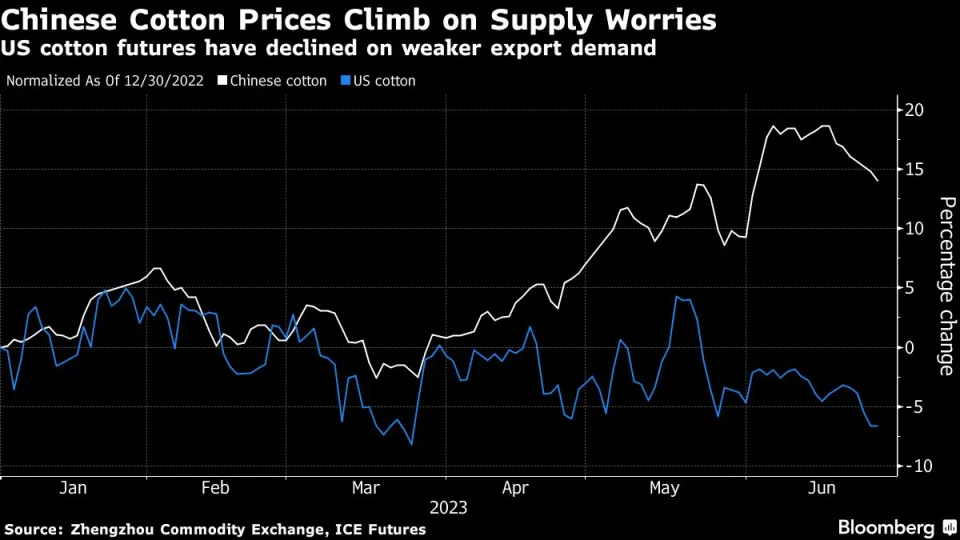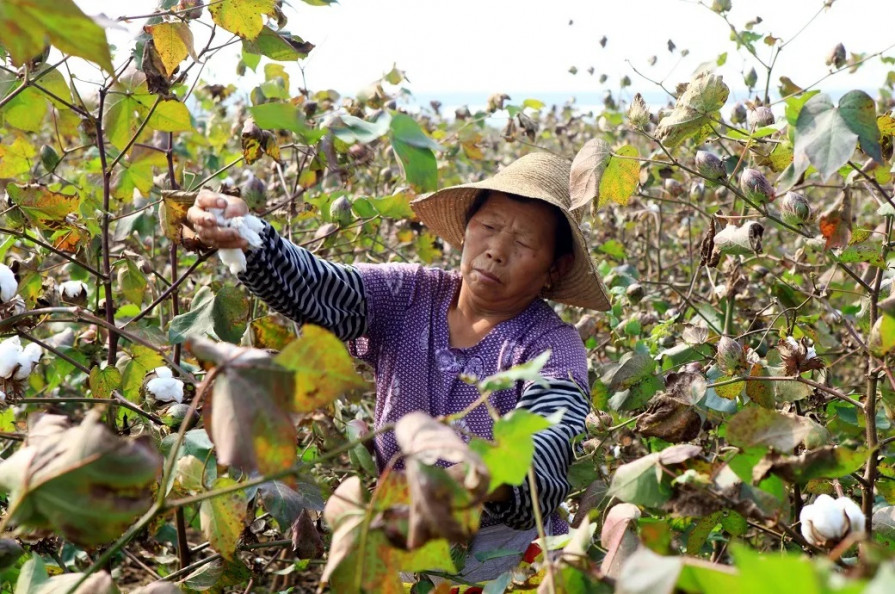(Bloomberg) -- China is planning to release cotton from state stockpiles to boost supplies, people familiar with the matter said, underscoring concerns that the crop to be harvested later this year has been hit by poor weather.
China may gather a smaller crop in the new season after a severe cold spell delayed sowing and hurt yields in Xinjiang, the top-producing region. The government could announce a plan to sell cotton from reserves as soon as this week, with volumes likely to be as much as a few hundred thousand tons, said the people, who asked not to be identified as the information is private.
China is the world’s biggest textile producer and one of the largest cotton importers. While it could boost purchases of foreign cotton to meet any shortfall in production, that may be countered by a weak outlook for demand as exporters of textile products grapple with a slowing global economy.

China imported just 490,000 tons of cotton in the first five months of the year, half the amount in the same period a year earlier. That has contributed to the weakness in benchmark US cotton prices, which are near a three-month low.
China’s top economic planner, the National Development and Reform Commission, didn’t respond to a faxed request for comment.
The crop in Xinjiang, which accounts for about 90% of China’s cotton, is currently at risk from high temperatures and hailstorms, just a few months after cold weather disrupted sowing. Mysteel, a commodity consultancy in China, forecast a 10% drop in cotton acreage as farmers have also switched to growing grains under a nationwide drive to bolster food security.
“It’s a recognized fact in the market that Xinjiang’s cotton inventory is tight,” broker SHZQ Futures said. “Prices are likely to stay volatile in the short term.”
China manages its cotton supply through the state reserves. It’s hard to ascertain how the sale will influence Chinese imports, as the move could either curb demand for overseas supplies or increase the need to replenish stockpiles. The government limits imports through a tariff-rate quota system.
Source: finance.yahoo.com